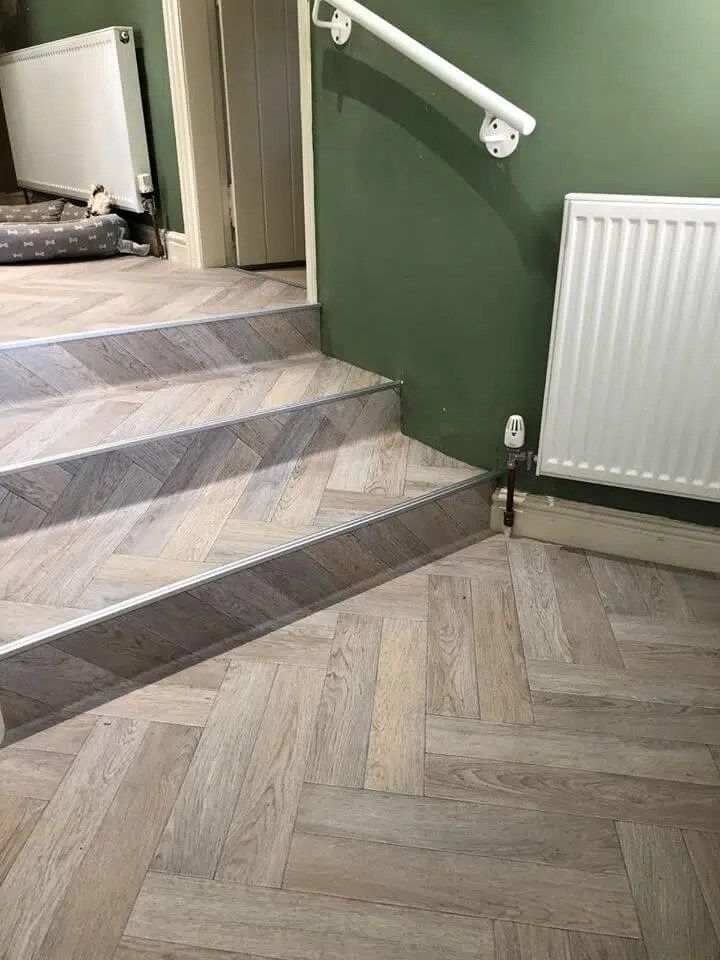Huddersfield, a town steeped in rich industrial heritage, has seen its fair share of transformations throughout history. From the bustling textile mills of the 19th century to modern residential and commercial developments, the evolution of flooring styles in Huddersfield offers a fascinating glimpse into the town’s cultural and architectural shifts. Join us as we take a stroll down memory lane, exploring the various flooring styles that have adorned the homes and buildings of Huddersfield.

The Early Years: Stone and Wood
In the early days of Huddersfield, homes were primarily constructed using locally sourced materials. Stone and timber were the dominant flooring options, reflecting the natural resources available in the region. The sturdy wooden floors, often made from oak or pine, were not only practical but also provided a warm, inviting atmosphere. In contrast, stone floors were commonly found in more utilitarian spaces, such as workshops and kitchens, valued for their durability and ease of cleaning.
The Victorian Influence
As the Industrial Revolution took hold in the 19th century, Huddersfield experienced rapid growth, leading to an architectural boom. The Victorian era brought about a newfound appreciation for decorative aesthetics. This period saw the introduction of more intricate flooring styles, including richly patterned tiles and ornate wooden floors.
Mosaic tiles became particularly popular in public buildings and affluent homes. Their vibrant colors and designs added a touch of elegance to hallways and entryways. Parquet flooring, made from small pieces of wood arranged in geometric patterns, also gained popularity, reflecting the Victorian penchant for craftsmanship and detail.
The Edwardian Era: Simplicity and Functionality
As the 20th century dawned, the Edwardian era introduced a shift towards simpler and more functional designs. Homes built during this time often featured wooden floorboards that were left bare or treated with varnish for a polished look. The focus shifted from elaborate designs to practicality and ease of maintenance, a trend that mirrored the changing lifestyles of the residents.
Lino, or linoleum, also made its debut in Edwardian homes. Affordable and easy to clean, lino became a staple in kitchens and bathrooms, offering a colorful and resilient flooring option.
Mid-Century Modernism
The post-war years brought about a wave of modernism that influenced architecture and interior design across the UK, including Huddersfield. The mid-century modern movement favored open spaces, clean lines, and functional design. Flooring styles shifted towards minimalism, with a renewed emphasis on natural materials.
Engineered wood flooring and tiles became popular choices, allowing homeowners to achieve a sleek look while benefiting from the durability of modern materials. The clean aesthetics of this era still resonate in many Huddersfield homes today, reflecting a timeless appeal.
Contemporary Trends
Fast forward to the present day, and Huddersfield’s flooring styles continue to evolve, embracing a blend of traditional and contemporary influences. Luxury vinyl tiles (LVT) and laminate flooring have surged in popularity due to their affordability and versatility. Homeowners can now replicate the look of hardwood or stone without the associated maintenance costs.
Sustainability is also a key consideration in contemporary flooring choices, with many opting for eco-friendly materials. Bamboo and cork are gaining traction for their renewable properties, while reclaimed wood offers a stylish nod to the town’s industrial past.
Conclusion
The history of flooring styles in Huddersfield is a reflection of the town’s growth and changing social dynamics. From the humble wooden planks of early homes to the sleek, modern finishes of today, each era has left its mark on the way we think about and design our living spaces. As Huddersfield continues to evolve, its flooring choices will undoubtedly mirror the ongoing dialogue between tradition and innovation, creating a rich tapestry of style and history that residents can cherish for years to come.
